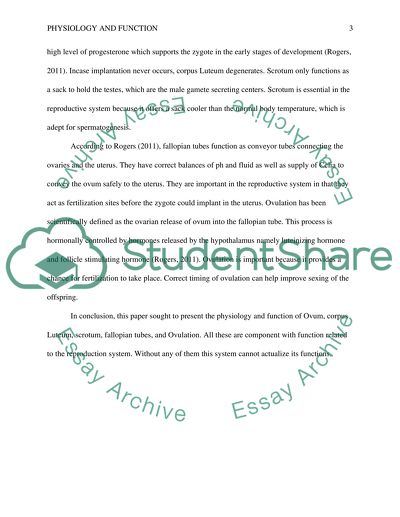Reproductive System Components, Physiology and Function Coursework - 5. Retrieved from https://studentshare.org/biology/1610405-physiology-and-function
Reproductive System Components, Physiology and Function Coursework - 5. https://studentshare.org/biology/1610405-physiology-and-function.


